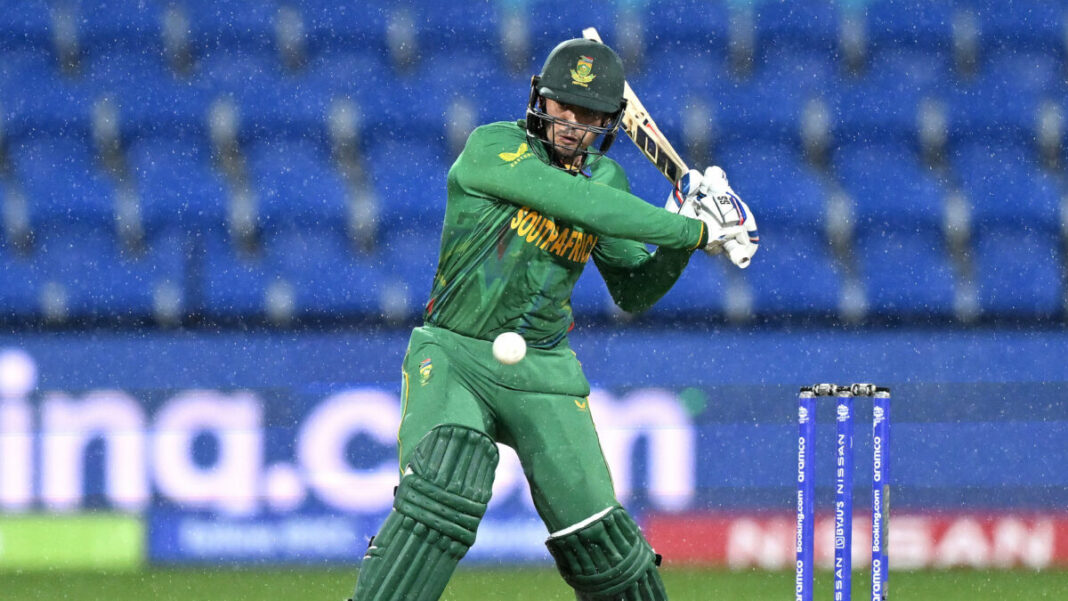When a cricketer hangs up their boots at 35, it’s odds-on that it was expected.
At 32, it will raise an eyebrow. But with the likes of Nicholas Pooran, who brought his international career to an end at 29, that is bound to attract attention.
With Heinrich Klaasen also leaving, and others like Glenn Maxwell, Marcus Stoinis, and Quinton de Kock opting for selective format options even at their peak, is 26 the new 36 in modern-day cricket?
If the trend continues, it will not be surprising to see players exit sooner. And that is already the case, Afghan seamer Naveen-ul-Haq retired from ODI cricket at the mere age of 23 to focus solely on T20 internationals and franchise cricket.
Such cases are no longer isolated; they mark a broader shift in the recalibration of priorities in an ever-changing cricket economy.
Is the very game changing in ways we are beginning to grasp?
From a structural standpoint, cricket is now undergoing a complete reset, where early retirements are not as extraordinary. It indicates a conscious decision instead, since it is no longer a case of loss of form or fitness but of losing out in a professional world that is slowly tilting toward upholding the values of personal longevity and financial security vis-à-vis the traditional grind of international cricket.
Franchise freedom is now a major draw for many, well beyond the exhaustive commitments to national duty.
The logic for today’s players is therefore bright: save energy, moderate the workload, and secure long-term relevance for financeable and physically sustainable formats. For many, early retirement becomes a path to continued performance, a financially secure life, happiness, and not as a fallback, but as a forward-looking option.
The changing value of international cricket
In the days gone by, to wear your national colours was the epitome of a cricketer’s dream. ICC tournaments came by only rarely and were occasions of great prestige that shaped careers and united nations.
Bilaterals had emotional and competitive elements to be built upon rivalries and reputations. Today, the cricket calendar is chockablock with assignments. An ICC event, be it the T20I or ODI World Cup, Champions Trophy, or World Test Championship, now appears every year.
While this may be a fine bargain from a commercial perspective, it has diluted the emotional value of the tournaments. From a once-every-four-years high point, it has been reduced to an almost yearly routine.
Glenn Maxwell. (Photo by Robert Cianflone/Getty Images)
Apart from major rivalries, bilateral series often fail at drawing the viewership and player attention. Therefore, international cricket is losing its monopoly on glory and career accomplishments.
The “country versus club” debate has become too simple an explanation. What we are witnessing are massive systemic changes, with two distinctly different cricketing careers coexisting. International cricket carries legacy, history, and honour, but also frequent travel commitments, packed schedules, and institutional inefficiency. Franchise cricket offers a shorter season, better pay, and more freedom.
Today, a player delivering in an IPL playoff, a PSL final, or a CPL semi would be more recognised and commercially relevant than grinding out a hard-earned Test hundred against a lower-ranked side. Players’ decisions are altered considering value systems that have shifted from longevity to impact, and from tradition to marketability.
Recalibrating priorities: Mental fatigue and the modern cricketer
The scrutiny of today still exists before modern cricketers. Media houses maintain an unrelenting pressure cooker along with social media and public expectations. Mental fatigue is now a central player-welfare issue; it has gone beyond a secondary concern.
Mental fatigue, time with family, and the necessity of caring for their bodies have all become cited reasons alongside considerations for Ben Stokes, Maxwell, and de Kock, who have all stepped away from certain formats. What once began as passion is perhaps becoming an emotional bind under an unforgiving calendar.
Franchise leagues offer a valuable reprieve, allowing the players to plan their seasons with a rest-first focus and to escape the emotional burden of playing for a nation with millions of eyes on it. Most importantly, they do provide security, financially and mentally. If that freedom exists, it will guarantee better performance and longer careers in the formats that the players choose.
This shift is not limited to athletes coming from nations where cricket does not enjoy significant resources. Even players from robust systems are opting for the shift. Kiwi face bowler Trent Boult opted out of the New Zealand central contract to pursue a career in franchises; Jason Roy willingly terminated his ECB incremental contract to play in Major League Cricket.
These choices do not reflect disregard, but rather signal well-informed decisions for self-preservation under modern professional standards.

Josh Hazlewood in the IPL. (Photo by Pankaj Nangia/Getty Images)
Redefining career sustainability
With increasing physical demands and mental pressures upon them, the whole focus has gradually shifted to career sustainability. Now, players select formats that minimise injury risk, maximise returns, and give more time for recovery and family.
Cricket boards may still insist on all-format commitments, but players are increasingly asserting control over their workload management. With increasing fitness requirements throughout the calendar year, and with very little off-season to go away, it isn’t surprising that players are now starting to assess their careers.
Why extend to 35 in all formats when smartly managing the career till 32 across leagues yields better returns, fewer injuries, and more time for personal growth?
Certainly, this is not the decline of international cricket but a rebalancing. The pride of playing for a country still exists. However, the structure of global cricket now allows for other definitions of success. Cricketers no longer fit into conventional pathways; instead, they are forging new ones, prioritising longevity, clarity, and control.
What lies ahead?
With the recent round of early retirements, cricket boards need to respond quickly and proactively. Flexible central contracts, short tours, comprehensive mental health support systems, and transparent, player-centric pathways of development are necessities.
The modern cricketers are consciously and strategically choosing their own physical and mental health.
If international cricket is to remain the highest honour in the sport, it must adapt beyond its legacy by addressing modern challenges, focusing on structure, support, and long-term sustainability.
If players are stepping away at 29, then the question should no longer be why they are leaving, but instead, what is the global game doing to ensure they want to stay?

